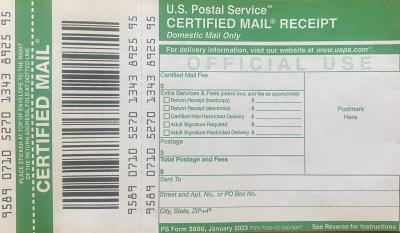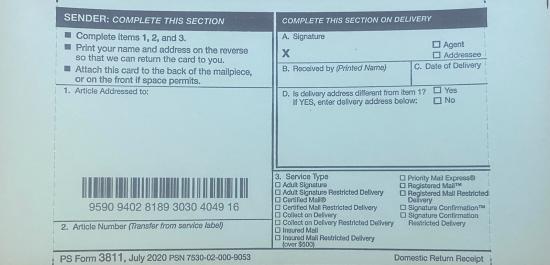Wetlands Permitting & Forms
When should I file an application with the Conservation Commission?
The Conservation Commission regulates activities proposed within and adjacent to wetland resource areas. The Massachusetts Wetlands Protection Act, M.G.L. c. 131, § 40 lists specifically what qualifies as a wetland resource area. Areas adjacent to wetland resources are known as buffer zones. Buffer zone sizes and related regulations vary depending on the type of wetland resource area present according to the 310 CMR 10.00 Wetlands Protection Act Regulations. Any work done in a wetland resource area or buffer zone must be approved by the Conservation Commission before work begins.
Commonly referred to as the “buffer,” the first 100 feet from the edge of a wetland resource area is always within the Conservation Commission’s jurisdiction. Perennial streams and riverfront areas are protected by an additional 100 feet, creating what is known as the 200-foot Riverfront Area, which is also regulated by the Conservation Commission. In addition to state law and regulations, the Town of Sharon Bylaws Chapter 262: Wetlands Protection and Section 5.06 of the Rules and Regulations of the Sharon Conservation Commission, further regulate activity in these areas.
The Conservation Administrator serves as a great guide for residents and businesses in the planning stages of a project. The majority of applications are either a Request for Determination of Applicability (RDA) or a Notice of Intent (NOI). Applications vary depending on the type of work proposed, and the resource areas and buffer zones present.
For minor disturbance projects, where the proposed work falls within 100 feet of a wetland resource area, filing an RDA is appropriate. Some examples of past filings include: installing a dock, constructing a deck, planting native landscaping, and replacing a walkway.
Major disturbance projects, where the proposed work falls within 100 feet of a wetland resource area, require filing a Notice of Intent (NOI). Previous filings have included (but are not limited to): removing vegetation, paving formerly pervious surface, constructing additions to residential homes, and building commercial or industrial facilities or infrastructure.
The Application Checklists below provide complete filing instructions. The Permitting Guides describe the application process and timeline. Links to required documents can be found in the forms section.
A quick way to check if there is a wetlands buffer on your property:
Visit: https://www.axisgis.com/SharonMA/
Click on the Search button with the magnifying glass
Type in an address and select the property from the search results
Click on the Layers button
Use the Quick Maps dropdown menu to select Wetlands Map
Zoom in or out as needed
The 100-foot wetland buffer is shown as a faint blue dotted line. Work performed within the 100-foot wetland buffer is one type of work that the Conservation Commission regulates. The commission reviews any work associated with a permanent or temporary impact within the wetland buffer. Contact the Conservation Department if there is evidence of a wetland buffer on or near your property.
APPLICATION CHECKLISTS
NOI Application Checklist: Filling a Notice of Intent (NOI)
RDA Application Checklist: Filing a Request for Determination of Applicability (RDA)
PERMITTING GUIDES
The Conservation Administrator can help you determine which type of permit would be appropriate for your project. Most applications are either a Notice of Intent (NOI) or a Request for Determination of Applicability (RDA). The links below provide background information about the application timeline.
Notice of Intent (NOI) Permitting Guide
Request for Determination of Applicability (RDA) Permitting Guide
When the commission approves a project outlined in an NOI, it issues a permit called an Order of Conditions (OOC). The OOC is valid for 3 years and details very specifically what work is allowed. It is possible to extend and amend an OOC. After issuance, extension, or amendment an OOC must be registered at the Norfolk County Registry of Deeds. Once a project is complete, an applicant must request a Certificate of Compliance (COC). The COC is then recorded at the Registry indicating that the project has been completed in compliance with the OOC. The link below describes the process for requesting to extend or amend an OOC as well as how to obtain a Certificate of Compliance.
Requesting: Extensions, Amendments, & Certificates of Compliance
Applications must be sent to both the Sharon Conservation Commission and the Massachusetts Department of Environmental Protection (MassDEP). The link below provides instructions for submitting an RDA to MassDEP electronically.
How to file with eDEP for: a Request for Determination of Applicability (RDA)
APPLICATION FORMS
Choose the appropriate form to submit with your application packet. See the guides above for additional information.
Request for Determination - WPA Form 1 (RDA)
Notice of Intent - WPA Form 3 (NOI)
Abbreviated Notice of Resource Area Delineation - WPA Form 4A (ANRAD)
Extension to an Order of Conditions - WPA Form 7 (complete page 1)
Request for Certificate of Compliance - WPA Form 8A
Note: there is no WPA Form for requesting to amend an Order of Conditions. For Requests to Amend an Order of Conditions, applicants should submit a written statement explaining their request.
NOTIFICATION TO ABUTTERS
When submitting an RDA, NOI, ANRAD, or Request to Amend an Order of Conditions, applicants are required by law to notify neighbors about the proposed project and application with the Conservation Commission. Abutters must receive notice of the hearing at least 7 businesses days before the hearing date. It is a multi-step process.
1.) Request an official list from the town Assessor's Office here. The fee is $.50 per abutter with a $6.00 minimum.
2.) Complete the Notification to Abutters form.
3.) Distribute a copy of the Notification to Abutters to everyone on the Assessor's list and provide proof notification. You can hand deliver the forms or send them in the mail.
4.) You need to include proof of notification in your application packet. If you hand deliver the forms, ask recipients for their signature for proof of delivery. If you send them via USPS, send them via Certified Mail, Return Receipt Requested. Include the green and white Certified Mail Receipts with your application package. You will receive "green cards," or return receipts after they are delivered. Submit the original or scanned green cards to the Conservation Department before your hearing begins.


5.) Include a signed Affidavit of Service for Wetland Permit Applications in your application packet.
LOCAL FILING FEES*
According to the Town of Sharon Wetlands Bylaw: CH 262, payment for local filing fees is required. Please find the local fee schedule here.
Additionally, a $275 advertising fee payable to the Town of Sharon should be submitted when filing an RDA, ANRAD, NOI, or request to amend an OOC.
*Local fees and advertising do not include any applicable state filing fees.